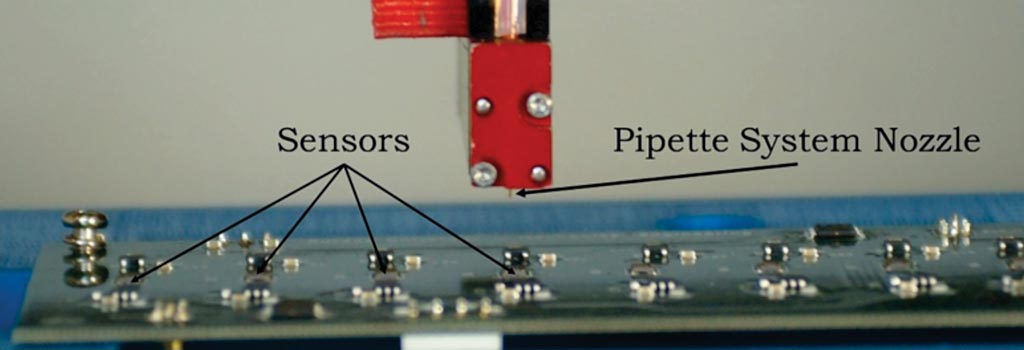Blood Biomarker Detected for Different Diseases
By LabMedica International staff writers
Posted on 05 Dec 2017
A method has been developed to identify biological markers in small amounts of blood that could be used to detect a myriad of diseases, infections and different medical conditions at early stages.Posted on 05 Dec 2017
Microelectromechanical resonators, or small vibrating sensors, have been created that can detect these biomarkers using just a drop or two of blood. The plate-style resonant sensors allow sensitive, inexpensive detection of biomarkers that can signify disease, illness or trauma.

Image: A piezoelectrically actuated pipette system is used as an inexpensive means to detect biological molecules associated with specific diseases, infection or other medical conditions (Photo courtesy of Purdue University).
Biomedical engineers at Purdue University (Lafayette, IN, USA) developed a test that can detect minute amounts of proteins, including protein from glial cells, which surround neurons in the brain. The proteins are secreted in relatively high concentrations in cerebrospinal fluid of victims of traumatic brain injury. Prior studies have found that a small amount of fluid leaked through the blood-brain barrier and got into the bloodstream of victims.
The sensors use a piezoelectrically actuated resonant microsystem, which when driven by electricity can sense a change in mass. The sensitivity of the resonator increases as the resonant frequency increases, making high-frequency resonators excellent candidates for biomarker detection. The method also is much faster and less expensive than other types of medical tests. One of the first uses for the test could be the early detection of traumatic brain injury in athletes, particularly high school football and soccer players.
The effects of repeated head impacts on high school football players has shown changes in brain chemistry and metabolism even in players who have not been diagnosed with concussions. The test also is inexpensive so a high school football team could do several mass screenings a season and the test also could be used for the early detection of Alzheimer's disease and Parkinson's disease.
Eric A. Nauman, PhD, a professor in the School of Mechanical Engineering and a co-author of the study, said, “Essentially the idea is that if you can measure anything that passes through the blood-brain barrier from the brain into the blood, it's a problem because it should stay in the brain. There's a whole host of diseases and different conditions where, if you could find these things in small quantities early on and just make it part of a standard workup, you could decrease health-care costs greatly. The study was published on November 1, 2017, in the journal IEEE Sensors.
Related Links:
Purdue University




 assay.jpg)








